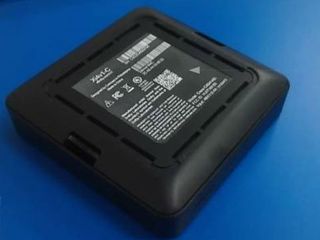New Comcast IP Set-Top Reaches The FCC

Taking a step toward deployment-readiness, a new IP-only video client device for Comcast’s X1 platform has passed through the Federal Communications Commission.
First spotted by GigaOm, the device in question is the Xi4, an IP set-top made by Pegatron for Cisco.
The FCC filings are short on detail, but Matt Strauss, Comcast Cable’s senior vice president and general manager, video services, told Multichannel News at last year’s Cable Show in Los Angeles that the Xi4 is a smaller version of the Xi3, Comcast’s first IP-only video client product.
Comcast hasn’t made any further announcements about the Xi4, but confirmed last fall that it had begun to deploy the Xi3, initially supplied by Pace, with plans to make it “widely available across our footprint in Q1 or Q2 of next year [2015].”
Comcast is also working on a next-generation of the XG1, the HD-DVR/gateway that currently anchors the MSO’s X1 platform. A rendering of that product, labeled as the XG2, appeared online late last year. A person familiar with the project, which also includes Cisco’s involvement (though other vendors are also expected to be working on it), said the version that appeared online is a headed gateway that won’t come equipped with an internal DVR, making it an obvious candidate for Comcast’s new Cloud DVR. It’s also possible that the XG2 will be made to work in tandem with the new Xi4 client over the home network.
Comcast has also acknowledged that it is working on new boxes for X1 that support HEVC and 4K streaming, but it’s not clear yet if HEVC will factor into the XG2 or Xi4. Comcast’s first 4K product, Xfinity in UHD, is a streaming app that is initially being offered on 2014 Samsung UHD TVs
Comcast and has been pursuing strategies that will put it in position to tap into smaller IP video devices that also eat up less power. Notably, Comcast and Cisco are among the founding members of the Linaro Digital Home Group, whose aim is to accelerate the use of ARM-based silicon in digital home applications. The low-power ARM architecture is already being used in tablets and smartphones, and now appears poised to show up in set-tops and other types of video devices.
Multichannel Newsletter
The smarter way to stay on top of the multichannel video marketplace. Sign up below.
